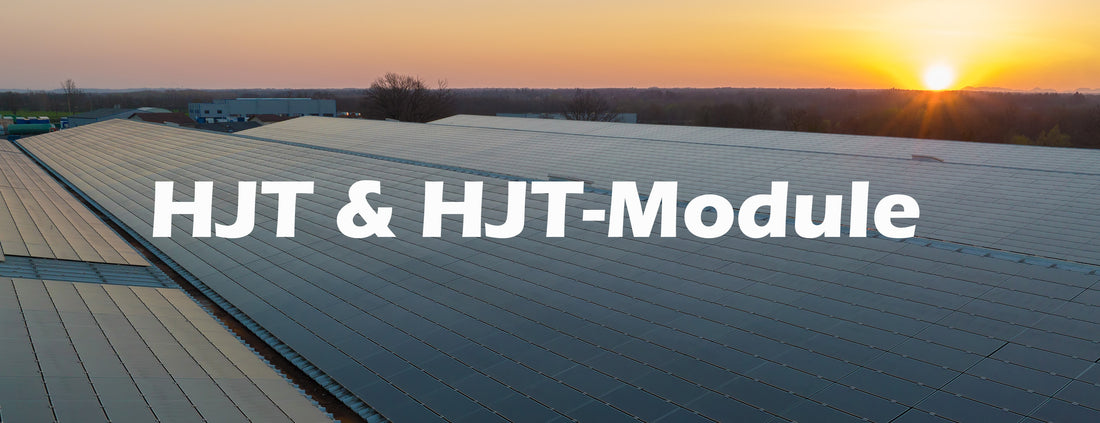All About HJT and HJT Modules: A Comprehensive Overview

The world of solar technology has developed enormously in recent years. One of the most promising advances in this area is heterojunction technology (Hjt) and its application in HJT modules and HJT solar panels. In this article we will deal with it in detail Hjt and HJT modules to get a clear understanding of this technology and its advantages and disadvantages. And we will make some high-quality ones HJT modules (Full Black HJT modules & Transparent HJT module) for you.
What is HJT?
The abbreviation Hjt stands for Heterojunction Technology, which means "hetero-connection technology" in German. It is an innovative method of manufacturing HJT solar cells (HJT modules), in which two different semiconductor materials are combined. This layered structure makes it possible to improve the efficiency and performance of the solar cells.
How does HJT work?
The functioning of Hjt is based on the principle of heterojunction, in which two different semiconductor layers are in contact with each other. These layers have different electrical properties, resulting in efficient separation of electrons and holes generated by light absorption. This separation creates a higher voltage, which ultimately leads to a higher energy yield for HJT modules .

Applications of HJT technology
- Photovoltaic (PV)
Hjt Technology is often used in photovoltaics to convert sunlight directly into electrical energy. These applications range from small solar systems on residential buildings to large solar power plants.
- HJT Solar Modules for residential and industrial applications
HJT modules find application in a variety of areas including residential and industrial applications. Thanks to their high efficiency and low-light performance, they are a promising option for sustainable energy production.
Pros and cons of the HJT module
- Advantages:
- High efficiency: HJT modules have a high degree of efficiency, which is often higher than that of conventional solar cells. This means they can convert more sunlight into electrical energy.
- Low temperature coefficient: HJT modules maintain a stable level of efficiency even at higher temperatures. This means that when temperatures rise, their performance losses are lower compared to conventional solar cells.
- Strong performance in low light: HJT modules deliver solid performance even in low light conditions. This makes them ideal for areas with changeable weather.
- Disadvantages:
- Higher manufacturing costs: Due to the complex technology and the use of different semiconductors, HJT modules are usually more expensive to manufacture than conventional solar cells.
- Technological Challenges: The manufacture and integration of HJT modules requires advanced expertise and specialized equipment.
High quality HJT modules recommendations
thanks to the Hjt These two have technology HJT modules great efficiency and competitive advantages as follows:
- Industrial benchmark: Up to 22% efficiency.
- security guarantee: fire class A
- Quality Certification: Tier 1 PV module manufacturer (BloombergNEF); Guarantees from Munich Energy Products.
- SMBB HJT half cut technology: Unique 12BB HJT cell with half-cut design. Adaptability to harsh environments Consist of double glass, with special design cells, Excellent anti-PID performance.
- Aesthetic design: Black but transparent outfit, elegant for any roof space.
- Maximum durability and reliability: 15-year product warranty and 30-year performance guarantee to ensure long-term high performance.
- Electrically compatible: Optimized for shading so they can generate electricity even when partially shaded, regardless of orientation. Over time, your system will therefore deliver a higher yield. Fits various inverters and optimizers.

Differences between HJT modules and conventional modules
- efficiency comparison
HJT modules and HJT solar cells outperform conventional solar cells in terms of efficiency and performance. This means they can harvest more energy from the same sunlight, making them an attractive choice for those seeking maximum energy production.
- space and flexibility
Another benefit of HJT modules is their smaller space requirement compared to conventional solar cells. This is particularly beneficial in situations where available space is limited. Also are HJT modules more flexible and can be attached to different surfaces.

HJT module and bifacial module
Bifacial panels are another type of solar panels that can absorb light from both sides.
In comparison, focus HJT modules on the use of different semiconductor layers to achieve higher efficiency. While bifacial modules benefit from reflected light on the back, the Hjt Charge carrier separation technology for improved performance.
The future of HJT
Research and Development
The Hjt Technology is still in the phase of constant further development. Researchers are working on further increasing efficiency and reducing manufacturing costs. This could lead to wider acceptance and application of the technology.
Integration into energy management
With the growing focus on renewable energy, HJT modules play an important role in the energy management of the future. They could be integrated into intelligent energy systems to ensure a sustainable and reliable energy supply.
Overall, the Heterojunction Technology (Hjt) a promising development in solar technology that has the potential to significantly increase the efficiency of solar panels. With their ability to convert more sunlight into energy and stable performances for HJT modules to deliver, it could play an important role in the sustainable energy production of the future.











